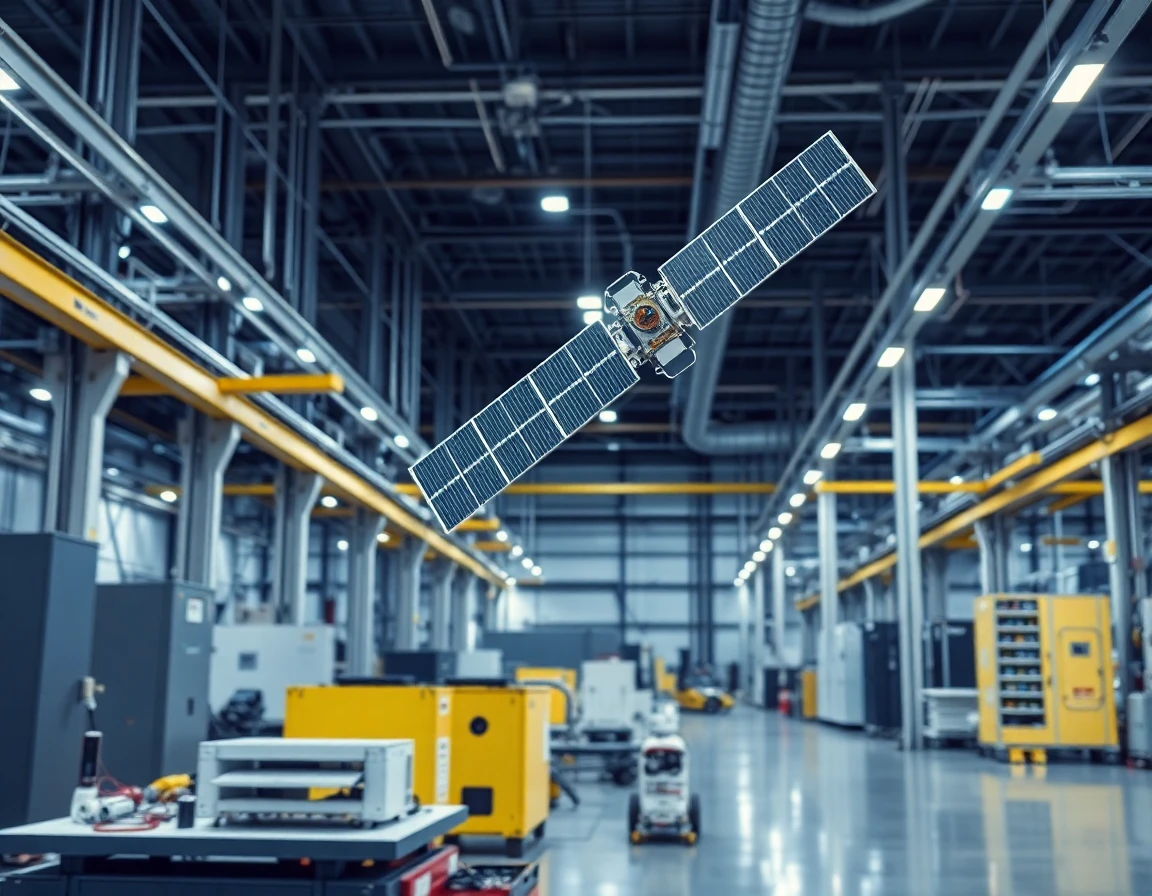Introduction
In an era defined by digital connectivity, the expansion of satellite constellations has emerged as a transformative force in global communications. These networks of satellites are designed to provide comprehensive internet coverage and facilitate advanced communication services across the globe, particularly in remote and underserved regions. As major players in the aerospace and defense industry ramp up their satellite constellation projects, the implications for businesses and consumers are profound.
The Rise of Satellite Constellations
Satellite constellations are groups of satellites working in unison to deliver data and communication services. Unlike traditional geostationary satellites, which orbit the Earth at a fixed position and can be limited by latency and coverage gaps, these constellations operate at lower altitudes, allowing for faster data transmission and broader service availability.
According to a report from the Federal Communications Commission (FCC), satellite constellations are expected to serve around 40 million households in the United States alone by 2025. Companies like SpaceX with its Starlink project, Amazon’s Project Kuiper, and OneWeb are at the forefront of this innovation, each launching hundreds to thousands of satellites into low Earth orbit (LEO).
Technical Specifications and Innovations
The efficiency of satellite constellations relies heavily on advanced technologies that enhance their functionality. High-precision inertial navigation systems are integral for precise satellite positioning and orbital adjustments. These systems ensure that satellites maintain the correct orbits in the ever-crowded space environment, thereby minimizing potential collisions and optimizing coverage.
Moreover, the integration of advanced thermal management systems helps satellites regulate their internal temperatures, ensuring optimal performance even in the extreme conditions of space. This is crucial for maintaining communication links and data integrity as satellites experience fluctuating thermal loads during their orbits.
Expanding Global Internet Coverage
The primary goal of these satellite constellations is to bridge the digital divide by providing internet access to remote areas where terrestrial infrastructure is lacking. For instance, SpaceX’s Starlink has already begun offering services in rural parts of the United States and has plans to expand further.
“The potential for satellite constellations to deliver high-speed internet to rural and underserved areas is game-changing,” says Dr. Sarah Williams, a telecommunications expert at the International Institute of Space Commerce. “It can empower communities with access to information and services previously unavailable, enhancing education and economic opportunities.”
Industry Insights and Competitive Landscape
The competitive landscape of satellite constellations is intensifying. With the global demand for internet access on the rise, companies are racing to launch their satellites. As of now, SpaceX leads the charge with over 1,500 satellites in orbit, while OneWeb has launched over 300 and plans to reach a total of 648 by the end of 2023.
These companies are also leveraging partnerships with telecommunications firms to enhance their offerings. For example, SpaceX has collaborated with various ISPs to integrate satellite internet into existing services, thus broadening access and improving user experience.
Future Developments and Challenges
Looking ahead, the future of satellite constellations appears promising but fraught with challenges. As more satellites are launched, concerns about space debris and orbital congestion are mounting. The European Space Agency (ESA) has highlighted the need for stricter regulations and debris mitigation strategies to ensure the sustainability of satellite operations.
Furthermore, as technology advances, the industry will need to adapt to emerging risks such as cybersecurity threats. Securing communication channels against potential attacks will be paramount, especially as more critical services rely on satellite communications.
Conclusion
Satellite constellations are set to revolutionize global communications and internet access, particularly for those in remote and underserved areas. With companies like SpaceX, OneWeb, and Amazon leading the charge, the race to connect the world is accelerating. As technological advancements continue to enhance the capabilities of these satellite networks, the potential for improved global connectivity and economic empowerment is within reach. However, addressing the challenges of space sustainability and cybersecurity will be critical to ensuring the long-term success of this burgeoning industry.
In summary, the evolution of satellite constellations marks a significant milestone in aerospace and defense, underscoring the importance of innovation in the quest for global connectivity.



